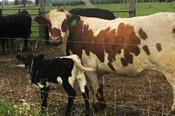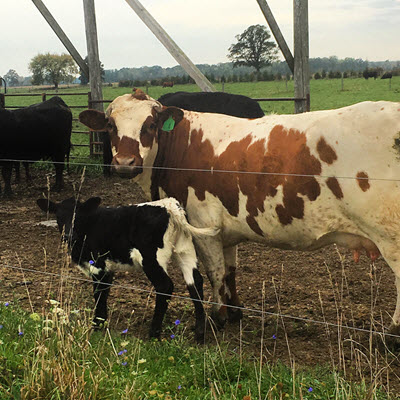
Farmers requesting financial support for reasonable care plans
By Kaitlynn Anderson
Staff Reporter
Wildlife predation is such a pressing issue for the province’s producers that the Ontario Federation of Agriculture (OFA) may ask the government for more assistance.
At the Annual General Meeting (AGM) in November, the Leeds Federation of Agriculture put forth a resolution to the OFA related to reasonable care plans used to help avoid wildlife kills. Specifically, the resolution centred on lobbying the provincial government for grants to help farmers implement these plans.
The members passed the resolution, which means that the board of directors will discuss the topic further, according to Neil Currie, general manager of the OFA.
Reasonable care plans require producers to “identify all implemented and planned investments, services retained and farm management practices employed to mitigate predation on their farm premises,” according to the Ontario Ministry of Agriculture, Food and Rural Affairs (OMAFRA).
The plan, which must be completed by a producer once he or she submits five compensation applications to the government in one calendar year, is then reviewed by OMAFRA.
While these plans are a part of the compensation process, they can be costly for producers to implement.
“In most cases, for sheep and beef farmers, these plans include fencing,” said Currie. “At the AGM, one sheep farmer indicated he would have gone out of business without financial assistance to help put up the amount of fencing required.”
So, the OFA would like to help farmers obtain such funding.
“Assuming the board passes the resolution and takes action on it, we will develop a plan to approach (the subject),” said Currie.
If approved, the organization will examine current guidelines and criteria, collect evidence, determine possible expenses and lobby the provincial government for support, he said.

Photo credit: Kaitlynn Anderson photo
Kim Sytsma, a cow-calf producer and president of the Leeds Federation of Agriculture, hopes that farmers will be able to receive funding for prevention tools in addition to compensation for wildlife kills.
“While the predation compensation program provides fair market value for animals on approved predation applications, it does not provide funding to assist farmers in preventing future incidents that result in financial loss,” said Sytsma.
“Mitigation tools and services, such as predator fencing, noise makers, guard animals and the use of hunters or trappers to remove problem predators are costs that must be borne by producers themselves. A grant program to support these types of initiatives could help prevent or reduce future predation issues on farms and would subsequently reduce the draw on the compensation program.”
Sytsma, who grazes her cattle on large tracks of marginal land, has had experience with predators.
While her land is ideal for grazing cattle, it is also a prime location for wildlife to thrive in, she said.
Even though she checks on her cattle at least three times every day, she still finds many of her livestock being killed by predators.
One summer, a predator killed several calves over a few days, so Sytsma hired a trapper. Ten days later, the trapper captured the problem predator.
Unfortunately, Sytsma lost even more calves during that period.
When she submitted her claims, they were denied.
By adopting a more proactive approach, the government could ensure stories like Sytsma’s become less common.
In the meantime, a lack of an efficient program may drive producers out of the industry, she said.
“Two of my neighbours sold their (livestock) because of predators and the failure of a program to compensate (for the) kills.” BF



Post new comment